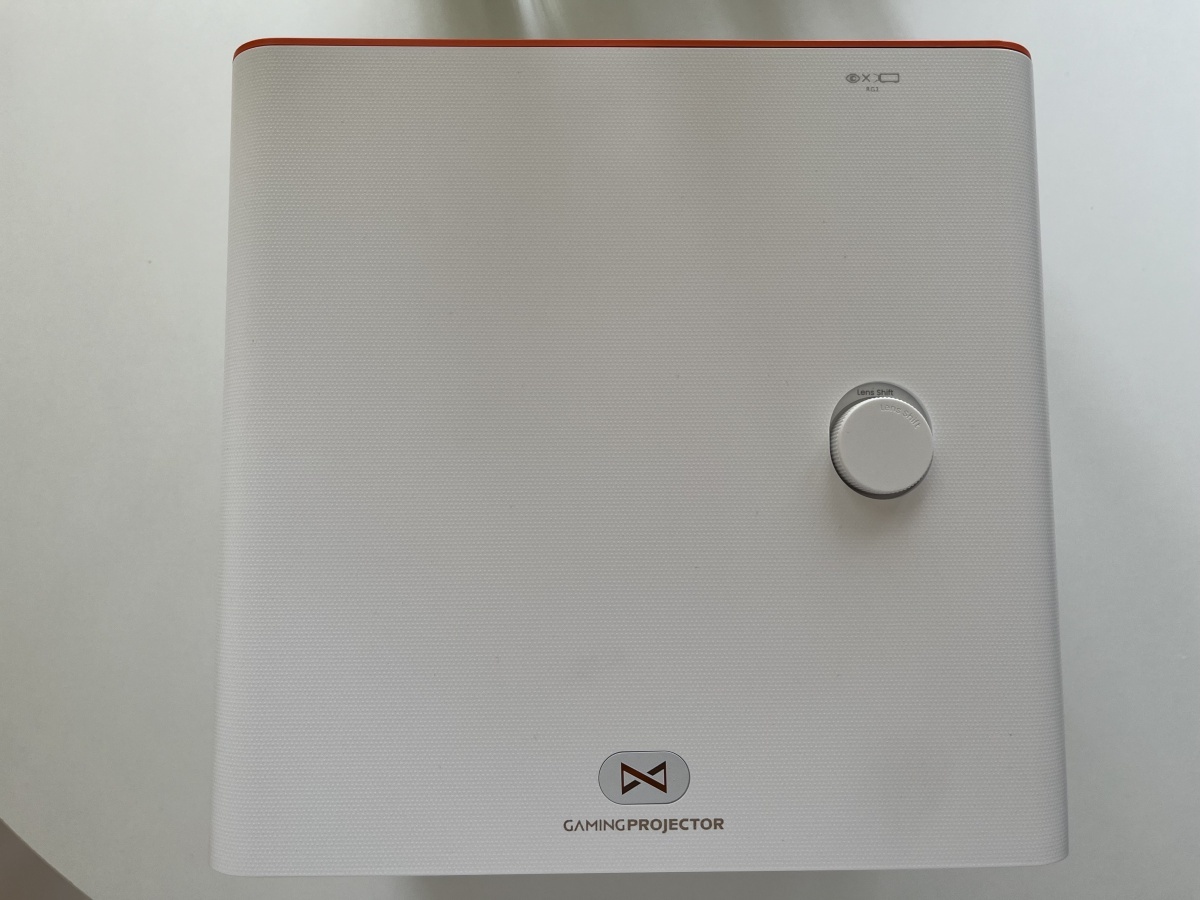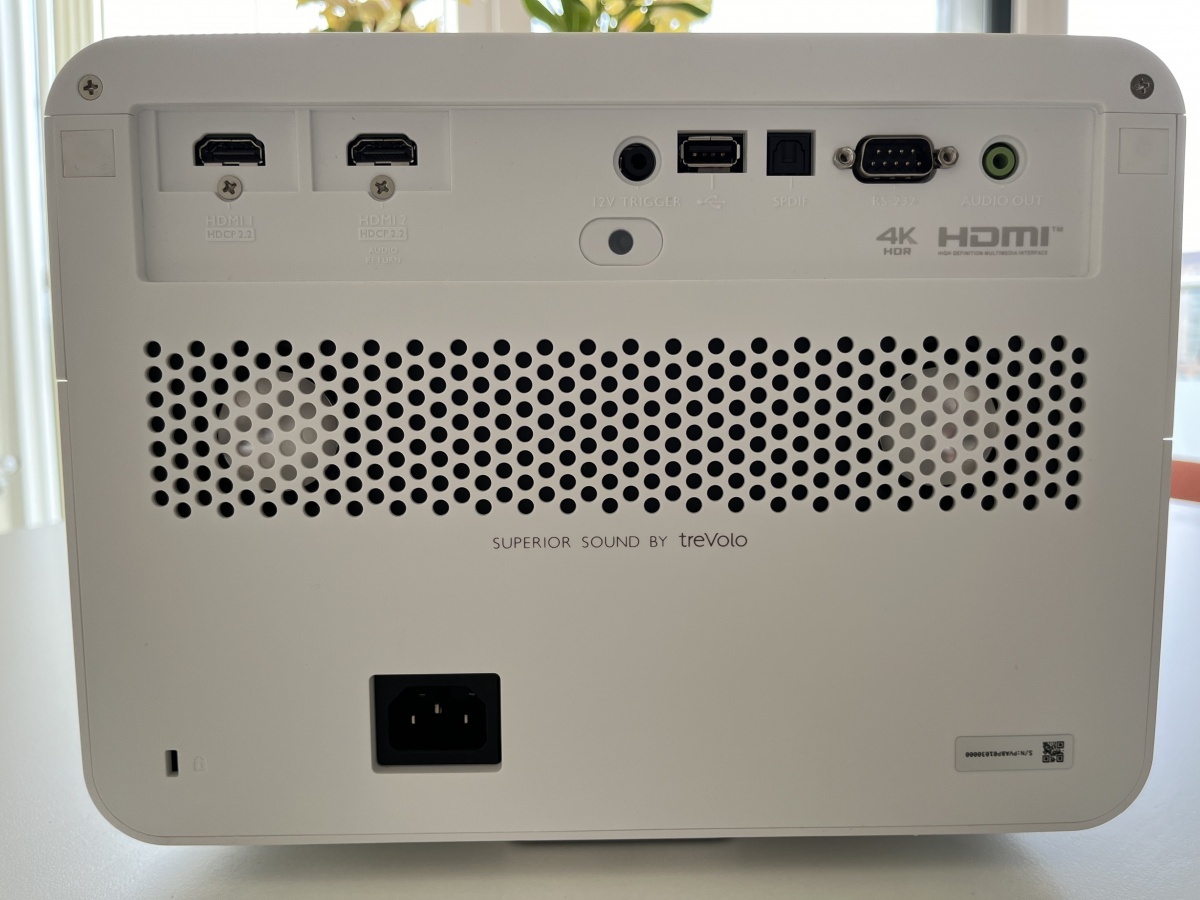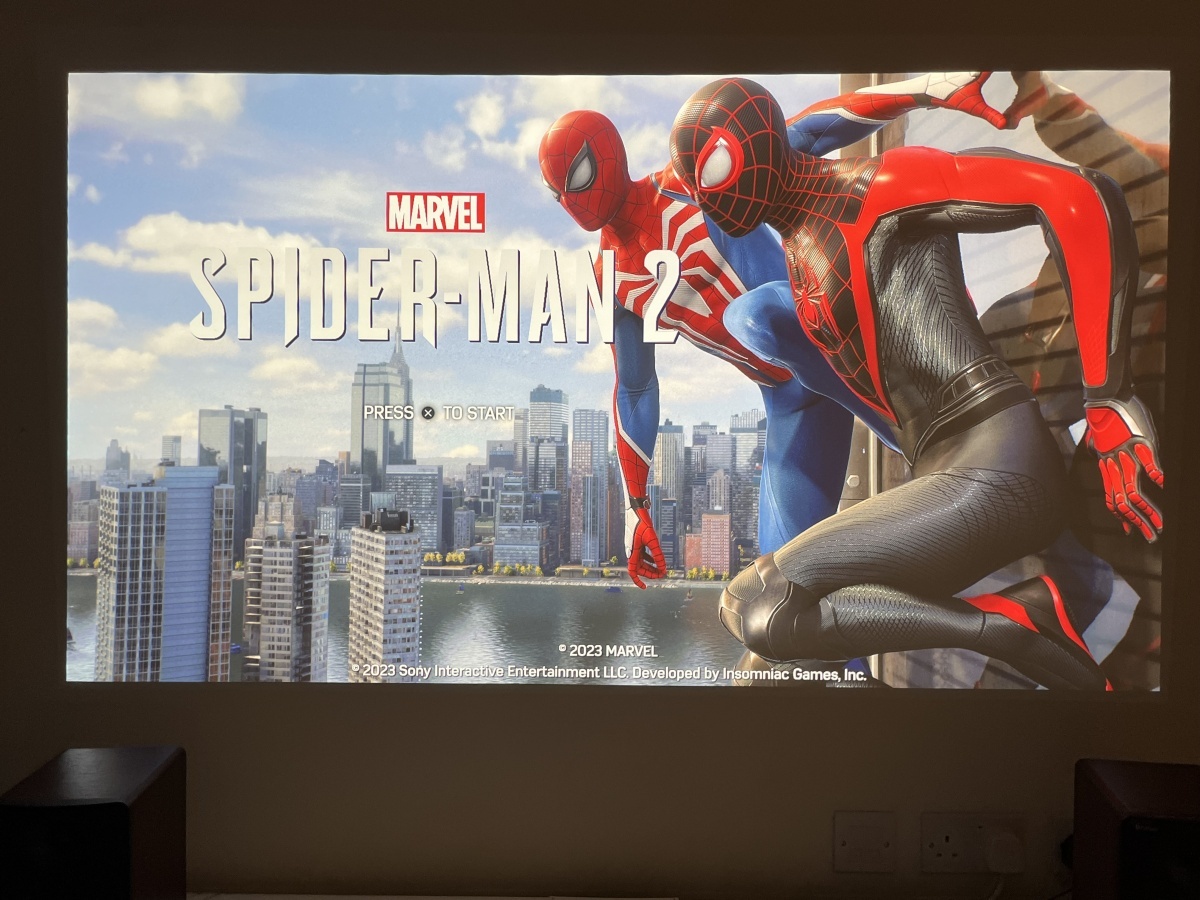
Notably, the projector's design flourishes extend beyond its form factor. The various outputs, which include two HDMI 2.0b ports, are well-situated on the back of the projector to accommodate both free-standing and ceiling-mounted setups. There are also two 5W speakers housed inside to offer immersive surround sound audio, which at least partly explains the more vertically-inclined shape.
In the box is also included a Google-licensed BenQ streaming device operating on the Android TV OS. What's great about it is that it can be setup without using one of the two external HDMI ports; under the hood, there's a dock with an HDMI/power connector that perfectly conceals the stick within the projector itself.

Most interestingly, BenQ claims the X3100i covers 100% of the DCI-P3 colour space, which means it displays the full range of an expanded colour gamut for one of the most vivid and varied images that can be attained in console gaming. Long story short, this positions the X3100i in the same space as modern QLED TVs and monitors in terms of colour coverage. The result? Projector-based gaming with very little sacrifice in quality compared to some of the best TVs on the market, at least when it comes to the spec sheet at face value.
Before getting onto the real-world performance, a couple points on setup. As a projector, the X3100i naturally needs more environmental tweaking than a TV typically would: a decently-sized space without too much direct sunlight, for one. The product's bulky form makes a free-standing setup a bit of a tricky proposition in smaller spaces. It knows this, though; the near-cubic design is as stylish as possible to avoid being aesthetically intrusive, but it will nevertheless require some adjustment if users are used to a standard TV setup.

So, specs and setup are one thing — how does the X3100i perform in practice? To put it concisely: exceptionally well, at least after 30 hours of testing. With just a few simple tweaks after being turned on for the first time, the X3100i's crisp image is something to behold. Rich, clear and astonishingly true-to-tone, it's quite unbelievable how an image of this calibre is coming from a household projector (although at this price point, perhaps it should be).
The internal speakers also do a great job of simulating a surround sound environment, at least with a free-standing setup with the projector directly in front of the user. The audio is rich and clear, and while it won't be as full of bass as some might prefer, it still goes above and beyond what all but a few internal TV speakers are capable of.

As a vehicle for gaming experiences, the X3100i delivers on its promise. Inbuilt are four primary game modes: RPG, FPS, sports and racing, with the option of custom settings as well. Each of the four preset modes tweaks both the picture and audio; the racing mode, for example, adjusts motion for a more realistic movement at speed, while the audio highlights the low and mid ranges for more immersive engine noises.
It's not without its disappointments, though — the projector can't output a 4K image at 120Hz and is only capable of 4K@60Hz or 1080p@120Hz (which is recommended in virtually no circumstances given how a 1080p image looks when projected onto a 150" space). While not a major issue for most right now, it isn't exactly future-proof.
On a brighter note, the X3100i's low input lag is mightily impressive, again outperforming even some TVs at a staggeringly low 4ms. For those who want a cinematic casual gaming experience, or even a lightly competitive one, this is probably the best place to get it. Of course, the X3100i is at the upper end of the 4K projector market, but it mostly justifies its price tag. Don't be put off by the 'gaming projector' label, either — it performs stunningly with movies, too, for a well-rounded, all-inclusive home cinema experience that will last for many, many years. For those in the market for a 4K projector, this is, in Cubed3's estimation, the best place to get it.

Exceptional - Gold Award


 Sign In
Sign In 14.07.2024
14.07.2024  Sandy Wilson
Sandy Wilson 
 Link to this post:
Link to this post:  Subscribe to this topic
Subscribe to this topic Features
Features






 Top
Top

